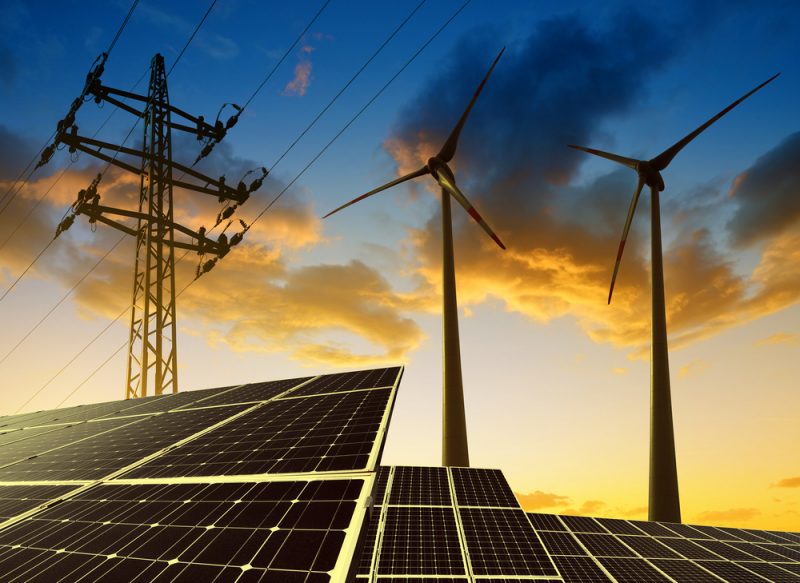AEE: U.S. policy, Trump’s infrastructure plan must include nation’s power grid

Congress and the Trump administration should focus on the electric power system as a key element of infrastructure modernization to accelerate economic growth, according to just-released Advanced Energy Economy (AEE) policy recommendations.
In mid-February, the president released his infrastructure plan, “Legislative Outline for Rebuilding Infrastructure in America,” which is designed to spur at least $1.5 trillion in new investment over a decade through $200 billion of federal funding and give Congress a roadmap for developing and passing “the most comprehensive infrastructure bill in our nation’s history,” according to the 53-page document.
The plan targets improvements to traditional infrastructure such as roads, bridges and airports, as well as “other needs like drinking and wastewater systems, waterways, water resources, energy, rural infrastructure, public lands, veterans’ hospitals, and Brownfield and Superfund sites.”
But what about the inclusion of the nation’s electric grid?
The vast majority of the nation’s electricity needs are met through for-profit investor-owned utilities, according to President Donald Trump’s plan. However, what infrastructure the federal government does own and operate “would be more appropriately owned by state, local, or private entities” because “federal ownership of these assets can result in sub-optimal investment decisions and create risk for taxpayers.”
Therefore, the president’s infrastructure plan recommends giving federal agencies the authority to divest of any federal assets where they can demonstrate an increase in value from the sale would optimize the taxpayer value for federal assets, according to the White House plan.
AEE has another recommendation.
“As Congress and the Administration consider infrastructure proposals, we firmly believe that energy must be a part of any infrastructure legislation,” said Dylan Reed, head of congressional affairs at AEE, a Washington, D.C.-based national association of businesses representing more than 1,000 companies and organizations in the advanced energy industry.
At the same time, private sector investments will play a huge role in this concept, according to AEE’s “Modernizing U.S. Energy Infrastructure to Grow Our Economy,” released March 29, which recommends that federal policy reduce regulatory burdens to hasten the flow of additional privately held capital to continue revolutionizing the nation’s energy grid framework.
The $200 billion advanced energy industry supports more than 3 million jobs across the United States, Reed told Daily Energy Insider on Thursday, adding that these technologies already have contributed to grid modernization, “whether advanced transmission technologies to improve the efficiency of the grid, wind and solar projects to provide flexible generation, or energy storage projects that help balance the electricity system, just to name a few.”
“The private sector continually innovates to bring the best technology to consumers and the grid,” he said. “These policy proposals seek to harness the power of advanced energy technologies to ensure we can modernize energy infrastructure with technologies that compete based on price and performance.”
And according to AEE’s policy paper, private investments are also among the cheapest ways to make improvements happen at the least cost to American consumers.
“AEE points to numerous ways that an infrastructure modernization plan can remove barriers to private investment for energy infrastructure,” Reed said, referring to the five policy recommendations AEE offers in its policy paper for reducing regulations that would encourage private investments.
One AEE policy suggestion is to streamline regulations to promote advanced energy deployment. For instance, Congress should grant the Federal Energy Regulatory Commission (FERC) federal backstop siting authority to ensure transmission projects under the Fixing America’s Surface Transportation (FAST) Act of 2015 can be completed on a timely basis. Current rules do not allow electric transmission projects to receive expedited review.
Another AEE policy recommendation is for Congress to pass legislation allowing consideration of all technologies in transmission and modernization projects. In turn, this action would encourage private investments in alternatives to traditional transmission, including non-wires alternatives (NWA), which frequently meet customer and utility needs at lower cost, according to AEE.
Such legislation also would boost private investments in advanced grid technologies (i.e. voltage optimization, dynamic line rating, advanced power flow control, etc.) and non-transmission options — such as energy storage, advanced microgrids, distributed generation, and smart inverters, among others — which also “can more efficiently deliver electricity to consumers and reduce unnecessary buildout of transmission,” according to AEE’s policy paper.
Additionally, AEE recommends speedier electrification of transportation. For instance, Congress should amend federal law to allow electric vehicle (EV) charging stations at interstate highway rest stops to encourage greater adoption of EVs.
“Lack of charging stations feeds “range anxiety” among consumers concerned about not being able to charge their vehicles on long trips,” according to the AEE policy paper. “Currently, federal law intended to prevent the commercialization of these public facilities stands in the way of EV charging station buildout at interstate highway rest stops.”
Overall, said Reed, AEE agrees with the Trump Administration that a better regulatory system can unlock billions in energy investment to modernize the U.S. infrastructure system.
“These proposals look to build on that principle to allow for private capital — working in coordination with the public sector — to modernize our energy infrastructure system,” he told Daily Energy Insider.
And there are key take-aways in the AEE policy paper for American consumers, as well.
“Advanced energy technologies are now winning in the market, providing affordable and reliable electricity to all Americans,” said Reed. “Increased investment in advanced energy will help to drive down the cost of energy to the average American household and business, while helping to keep the lights on.”
As the federal government sets out to upgrade the country’s infrastructure for the 21st century and beyond, AEE concluded in its policy paper, “modernizing energy infrastructure deserves consideration among the nation’s priorities.”
